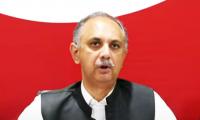If you listen to the White House, you hear that the economy is strong. Others will tell you that it has already sunk into recession. Such “analytical” differences are common at almost all times and almost always reflect the speaker’s political agenda more than any straightforward reading of the statistical evidence. These days’ things look more ambiguous than usual. Statistics offer ammunition for both views. The president can point, and he does, to the robust growth in payrolls. Those with a less sanguine view of things can point to among other things two consecutive quarterly declines in the nation’s real gross domestic product (GDP). Although the balance of the evidence points clearly toward a weakening economy, it is also fair to admit that the statistics paint a strangely mixed picture.
The Labor Department’s monthly employment report illustrates. On the positive side, the July survey of employers showed a striking expansion in payrolls, a gain of 528,000 positions. Private payrolls expanded by 471,000 positions. Though these are not record increases, they are nonetheless beyond most historical experience and far beyond where consensus expectations were. But in the same report, the survey of households showed July jobs up only 179,000. This tells quite a different story from the employers’ tally. The jobs gain was not only much smaller but was insufficient to overcome the June decline in jobs so that over the two months June and July the nation by this measure shed some 136,000 jobs.
Despite this contrast – still unexplained by the Labor Department – what tips the balance to the negative side is the flow of information from elsewhere and from the rest of the department’s monthly report.
True, the unemployment rate dipped slightly from 3.6 percent of the workforce in June to 3.5 percent in July, but department also reported that some 538,000 people dropped out of the workforce in July. Since they are neither working nor seeking work, this movement more than accounts for the fall in the unemployment rate. What is more, the average weekly hours worked remained unchanged in July at 34.6, still down from April’s measure.
Outside the Labor Department’s accounting, there are of course the first and second quarter declines in real GDP, precipitous declines in consumer confidence, and reporting by the Institute of Supply Management (ISM) of slowing overall and an outright decline in the new orders part of the measure.
This list of negatives is of course far from complete, but it is nonetheless indicative.
Apart from the current statistics that point to economic decline, two other considerations weigh heavily on the economy’s prospects. One is the ongoing inflation. At last measure, for June, the consumer price index (CPI) rose 9.1 percent from year-ago levels. This kind of price pressure seems likely to last. Even if it abates some — say to 8 percent or 7 percent — it will remain sufficient to impair economic growth prospects by eroding business and consumer confidence and discouraging the saving and investment on which economic growth ultimately depends. These effects could bring on recession all on their own. It certainly would not be the first time in history that inflation did so.
A still more potent recessionary threat emerges from the Federal Reserve’s (Fed’s) fight against inflation. The Fed began this effort last March. Before then, it had pursued a pro-inflationary monetary policy. It had kept short-term interest rates near zero and poured new money into financial markets buying bonds directly – mostly treasuries and mortgages – a practice the Fed refers to as “quantitative easing.” But since the March policy shift, the Fed has drained money from financial markets by selling from the hoard of bonds it had previously acquired and by pushing up short-term interest rates some 1.75 percentage points.
While these are standard anti-inflation moves, they also restrain economic activity. What is more, the Fed seems determined to take further steps along these lines in coming weeks and months – a pattern that will make recession still more likely.
If this assessment is correct – and it does seem likely – then the statistics on which the optimists rely – including the White House – will turn negative in coming months. The evidence of economic weakness, if not outright recession, will become overwhelming. Whether this resolution of the economic picture takes place in the next month or two remains uncertain, but it is hardly likely that the ambiguities will remain in place very much longer.
This initiative enables them to earn a dignified livelihood for their families
The event will host more than 700 booths, including leading global and Pakistani tech giants
Gold rates increased by $8 to all-time high rates of $2,371 per ounce in the international market
Strong retail sales prompted economists at Goldman Sachs to boost their gross domestic product
The IMF dictates its terms based on our past performance
Goldman's profit rose 28 percent to $4.13 billion, or $11.58 per share, in the first quarter







